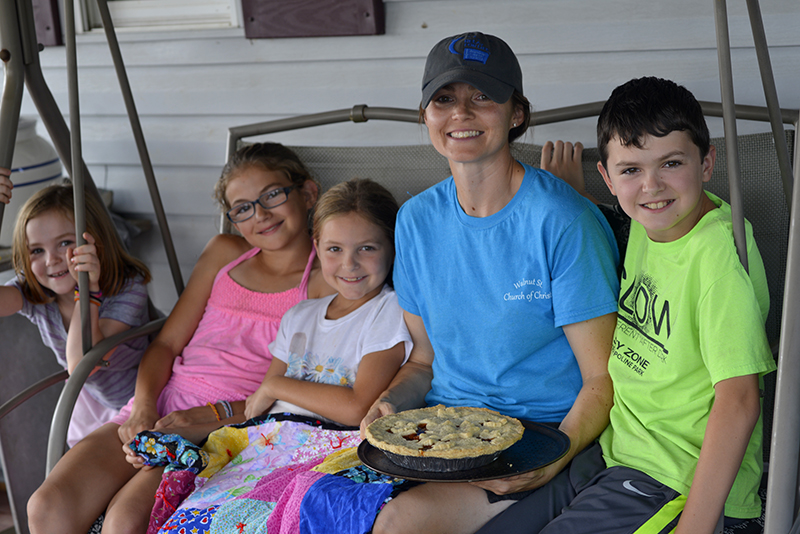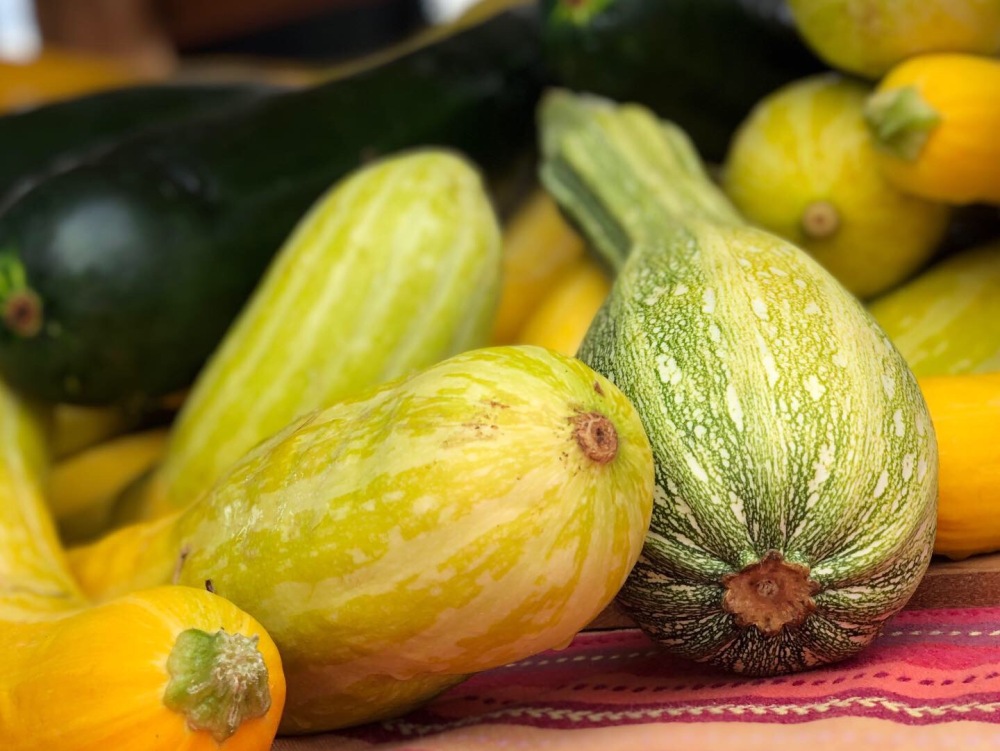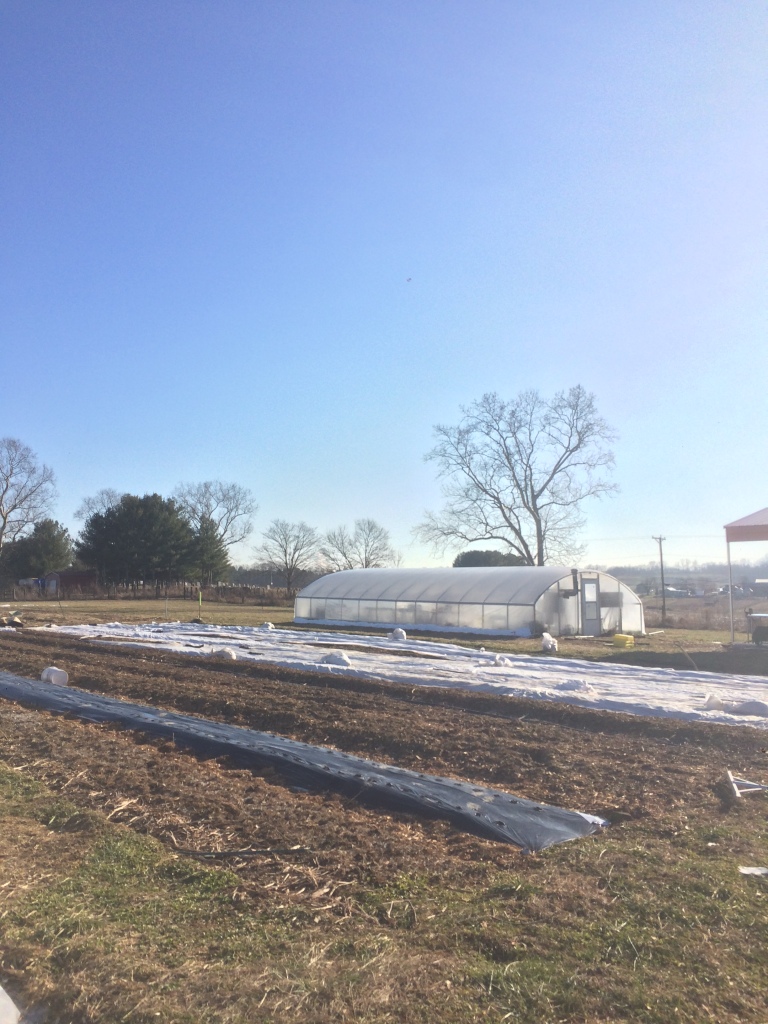The Joys of Ohio’s Winding Road: Reciprocity and a Return to Regional Roots
This post was originally published on Ohio’s Winding Road website.
BY GRANT JOY
Photos courtesy of Dustin Massengill
Historically in Appalachian Ohio, there was an emphasis placed on subsistence farming. Before the timber and coal booms of the 19th century, Ohio’s hill country was dotted with small-scale family farms. Recently, the region has started to return to its farming roots, as sustainable farms have been springing up across southeast Ohio as a way to build healthier food systems and more interconnected communities. According to a report from the Appalachian Regional Commission (ARC), there were a total of 1,077 new farms in Appalachian Ohio between 2007-12.* The Blaney Family is an example of this new trend emerging in southeast Ohio.
Adam and Tabby’s road to full time farming was circuitous as the rugged hill country landscape that makes Ohio’s Winding Road region unique. Adam and Tabby met at Ohio University during their freshman year. After college, the Blaneys found themselves in Greenbrier County, West Virginia, as Adam had gotten a ministry job. It was there that the young family started gardening. “When we moved to [southern] West Virginia we wanted to start gardening,” recalled Adam. “We spent five years learning from old-timers in the mountains. The people there taught us how to grow things, what to grow, and gave us some of their old seeds that we still use today.” This experience catalyzed a desire in the Blaneys to pursue farming further.

Due to a combination of factors, the young Blaney family moved to Springfield, Missouri in the Ozarks, to be closer to Tabby’s family and for a ministry job. That is where the idea of farming full time really started to sprout, partially due to their interest in community-supported agriculture (CSA). The CSA model connects the consumer directly to the farmer as community members are able to subscribe to the harvest of local farms. Both the consumer and producer share the financial risks associated with farming and a community is created as a result.
While participating in the Springfield Farmers Market, Tabby and Adam meet the Millsaps, a family running a CSA Farm. They signed up for their CSA programs and quickly started volunteering at the Millsap’s farm. “Half-way through his masters degree, we decided farming is what we wanted to do,” said Tabby. As a growing family, the Blaneys saw farming as enticing and as a way to build strong family bonds. “The lifestyle was really appealing,” Adam elaborated. “That’s really been the whole appeal of this. You can thrive at building community through raising your kids on the farm, and that farm becomes the hub of a little community. The whole idea of creating a life around the farm was very appealing to us.”
Through their connection with the Millsaps family, Adam and Tabby were able to gain further experience through the CSA model. “The next three years in Missouri are when we took on the farmers market there,” Tabby explains. “It was just a summer market, April through October. It gave us some experience. I was the assistant manager for the market. It gave us tidbits of knowledge of working with people, how to set up, how to sell, [and] the business behind it, so it was a great opportunity for us on a small-scale.”
Tabby hinted at the importance and advantages of being involved in a CSA. CSAs afford community members an opportunity to become more connected with their local food sources. This connection helps to humanize the local food system because it helps keep local dollars in the community while also supporting local families. Furthermore, they allow for prospective farmers to get a tangible experience learning practical knowledge as they continue to gain hands-on skills.

As a result of Tabby’s two grandmother’s passing away, the Blaney’s wanted to return to the hills of southeast Ohio, to be closer to Adam’s family, as he grew up in Shawnee, Ohio. “Moving back was for us to be part of the family here,” states Tabby. “Our kids needed to know their grandparents.” They also wanted to start farming full-time and began looking for suitable farmland.
There are many difficulties facing young farmers; two of the largest are access to quality farmland and infrastructure development. The family spent two years looking to purchase land. The search was made difficult due to the topography of southeast Ohio. Eventually, the Blaney’s were able to find a 5-acre farm in Meigs County on State Route 143. Starting off as full-time farmers has been tough, as infrastructure has comprised a lot of Adam’s energy the past year. “We had a lot of big infrastructure projects,” said Tabby. “That put us behind because we had to focus on the big projects and not put as much focus on the little things.” The challenges facing new farmers are tough, but the Blaney’s have managed and now have a large amount of the infrastructure in place. As a result, they can now focus more of their efforts on producing food.
Sustainability is at the heart of the Blaney agricultural philosophy. “We often say we are a sustainable farm,” explained Adam. “In that, this little piece of ground supports a family. It sustains our family. We are part of the local community, as a sustainable piece of the local economy. As far as the practices go, our emphasis is on soil health. We grow our food without the use of synthetics and fertilizers. We are attempting to grow in a sustainable way that helps to add to the health of the soil.” The Blaney family’s sustainable approach has allowed them to get the most value out of their land. “We only grew on about half-an-acre this year,” Tabby mentioned. “I doubt we will do a lot more than that next year because if we can do it right and grow it intensely and keep the crops in the ground and not let anything go bare, half an acre is plenty of space to grow a ton of vegetables.” The family has found financial success through growing large quantities of tomatoes in the summer and lettuce and salad mix year-round. However, they grow a far more diverse mix of vegetables ranging from squash, kale, and garlic to cabbage, beets, onions, and potatoes. The diversity of veggies grown at their farm is a direct reflection of those who have passed on their knowledge and expertise along the way.
One of those influences on the Blaney Family was Steve Shepherd, a subsistence farmer from Greenbrier County, West Virginia. “I’ll never forget talking to him about the ability to completely exist without the need for anyone,” Adam recalled. “They did everything for themselves and they were very proud.” Shepherd is just one example of a person who helped Adam and Tabby along the way. “We’ve really learned to appreciate all those people that grew their own food to support their family as part of their lifestyle,” Adam continued. “I love that idea of just being able to provide for my family and learn how to tend the Earth in a way that you can support people and it feels good to carry on a lineage of people who learned to do that. We’ve learned so much from them. A lot of our practices [have come from them]. A lot of our beans and our best-selling tomatoes seeds that someone has given us, whose family had for 85-90 years, we’re still growing them.”

Proximity to the Athens Farmers Market has been a vital key to the success of Blaney Family Farms. “It’s the right niche,” explained Tabby. “The people of Athens County know what they want. This market is old enough that they’ve been coming here with or without us. So having another farm that wants to grow good food for them, they’re appreciative in a way a lot of communities aren’t yet. It’s the perfect market to get into because they already know they like us because they know what we do.”
The importance of farmers markets to the long-term viability of local farmers––especially young farmers––plays a crucial role in the success of locally-sourced food systems in the area. The importance is placed in the numerous markets across Ohio’s Winding Road region. While Marietta, Somerset, and Chesterhill have established farmers markets, new markets are popping up in communities like Amesville and Shawnee.
The end goal for the Blaney Family Farm would be to become a CSA Farm. In doing so, the farm will be a community hub for northern Meigs County, and would provide for those interested in sharing a humanized experience of a local food system. “A CSA… is what allows a farm to be a part of the community,” states Adam. “It creates a sense of place. We intend to be a place where people come, people enjoy, people can work and volunteer and people can see where their food comes from. I want them to see that food comes from our family. And by buying food from us, you are supporting our family; in turn, we are supporting you.” Tabby then added on to Adam’s idea of reciprocity: “There’s a lot of awareness involved. The community building [aspect] of it, it’s [all about] relationship building. People are aware this is what is here and these people are real and they’re in it for the people. They want to build this family in the community and they want the community to support their family. It’s a beautiful thing to see.”

Reciprocity is steeped in the idea of a CSA and interwoven throughout the Blaney’s farm. From their regenerative agriculture practices that enrich the health of the soil, to using seeds that were passed down to them along the way, to wanting to use their farm as a way to educate and build a more interconnected community, the Blaney Family Farm is rooted in this practice of exchange and benefit. The Blaneys are rooted in a way of life that mirrors the lifestyles of subsistence farmers that farmed Ohio’s hill country more than a century ago. But they are also looking toward the future, and the new (old) models of farmers markets and CSAs.
IF YOU GO: To learn more about Blaney Family Farm visit their Facebook page at https://www.facebook.com/blaneyfamilyfarm/ or catch them at the Athens Farmer Market every Saturday morning!
*Appalachian Regional Commission: “Agriculture and Food System Trends in the Appalachian Region: 2007 to 2012.”
About the author: Grant Joy is the 2019-20 AmeriCorps member serving this year for Ohio’s Winding Road. This is his third AmeriCorps service year. He spent the past two years serving in Colorado and Vermont before deciding to come back closer to home in southern Ohio. He is looking forward to sharing stories of the people and places that make Ohio’s Rising Appalachia a unique and vibrant region.
